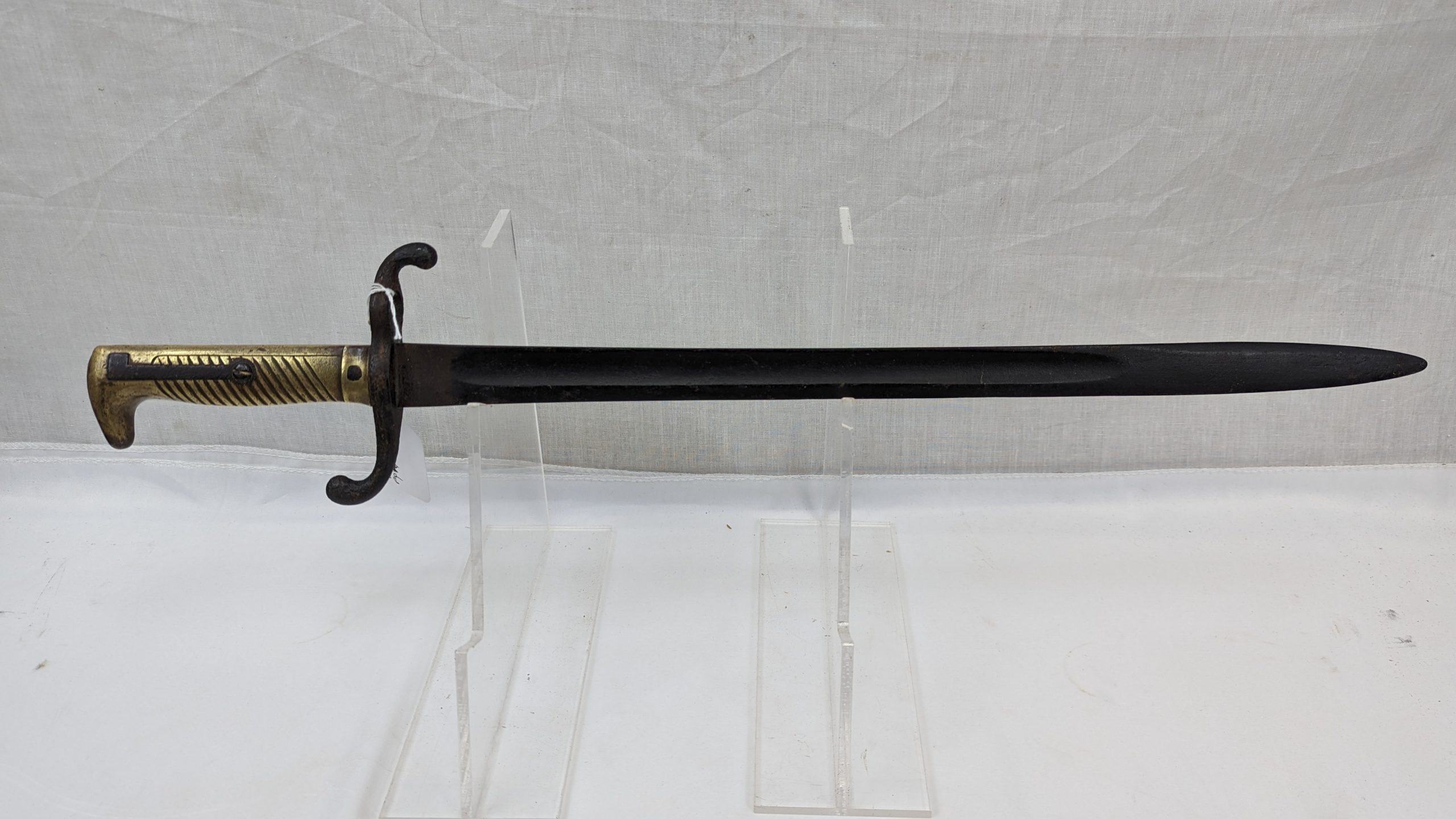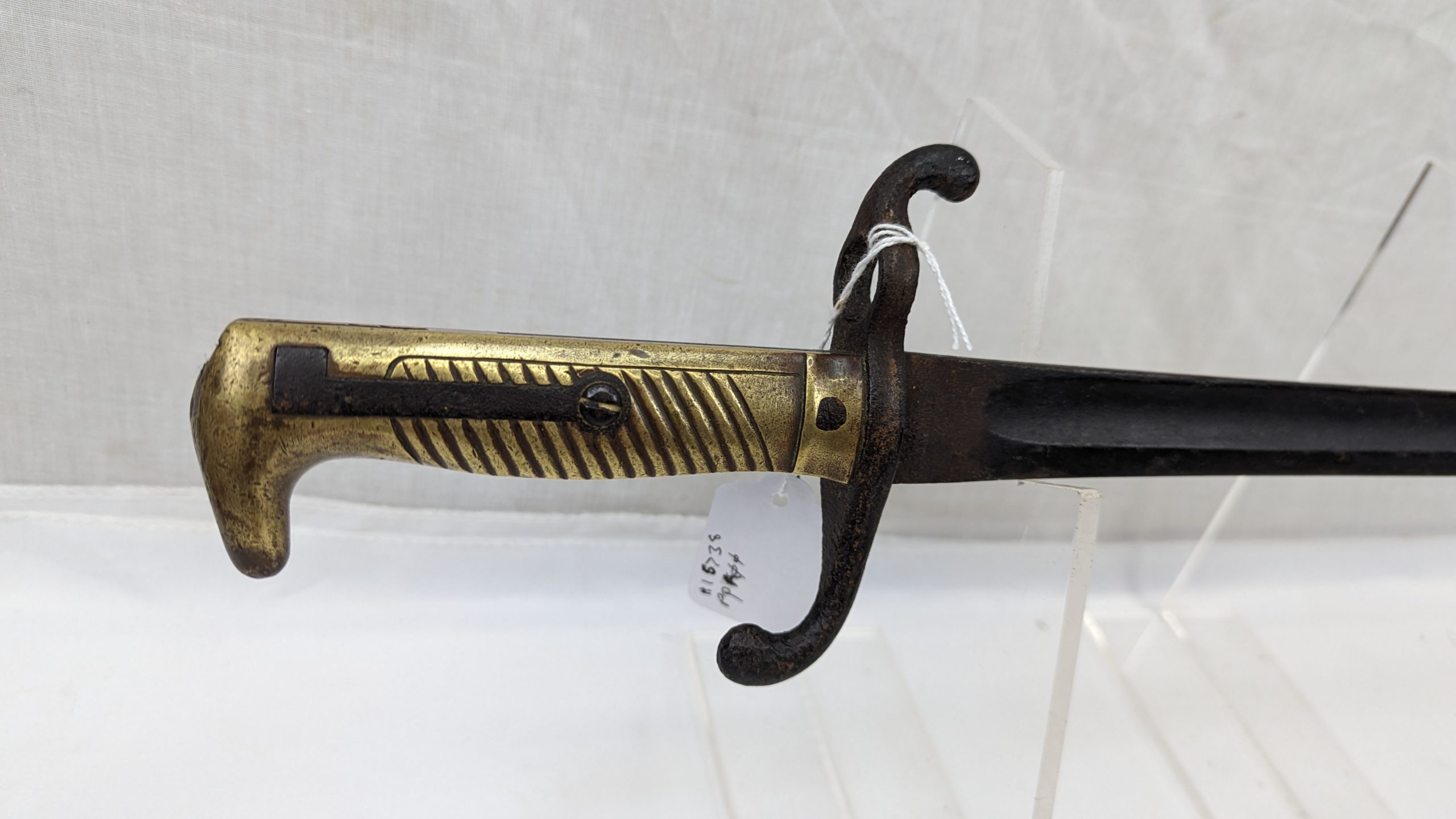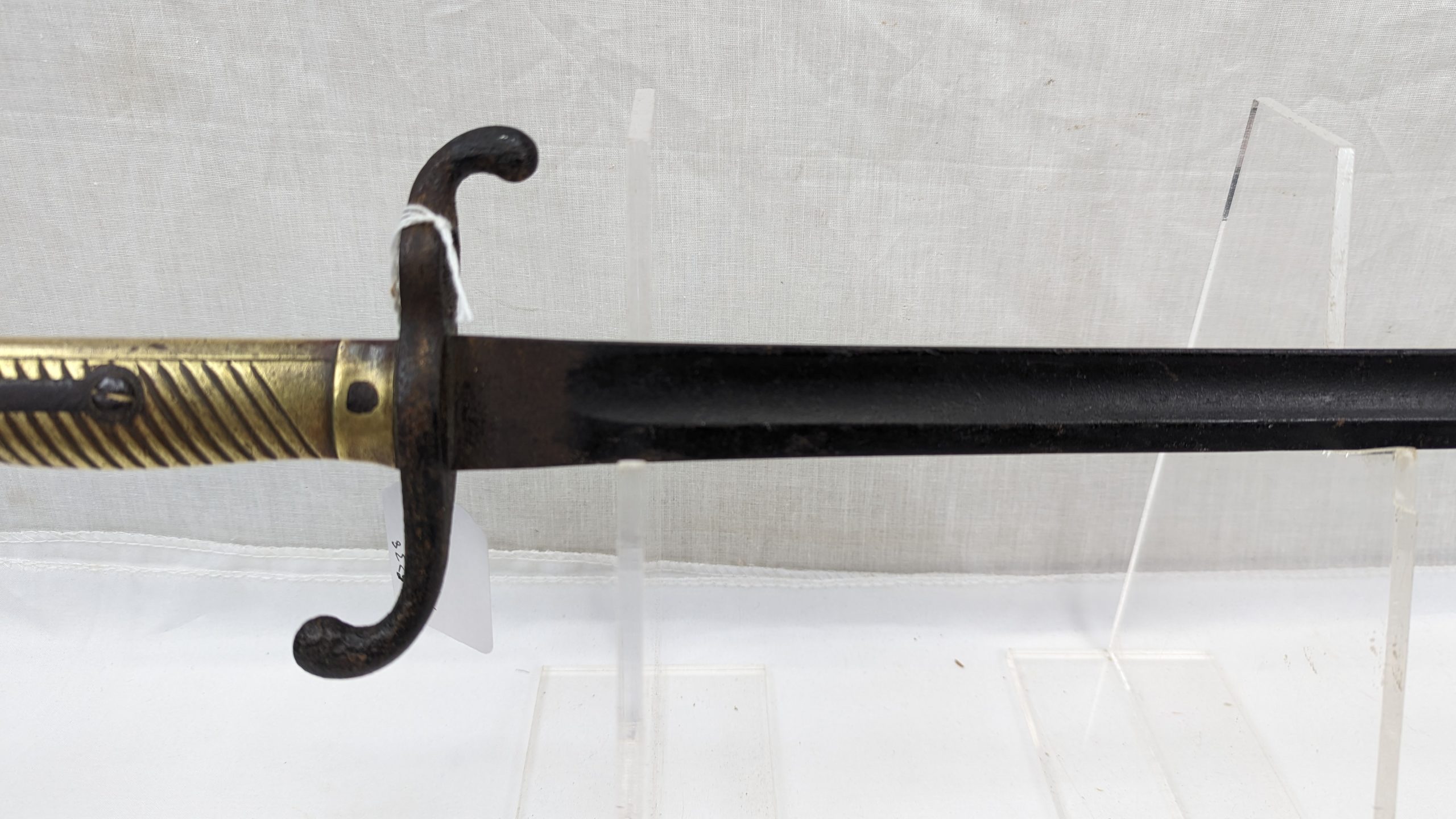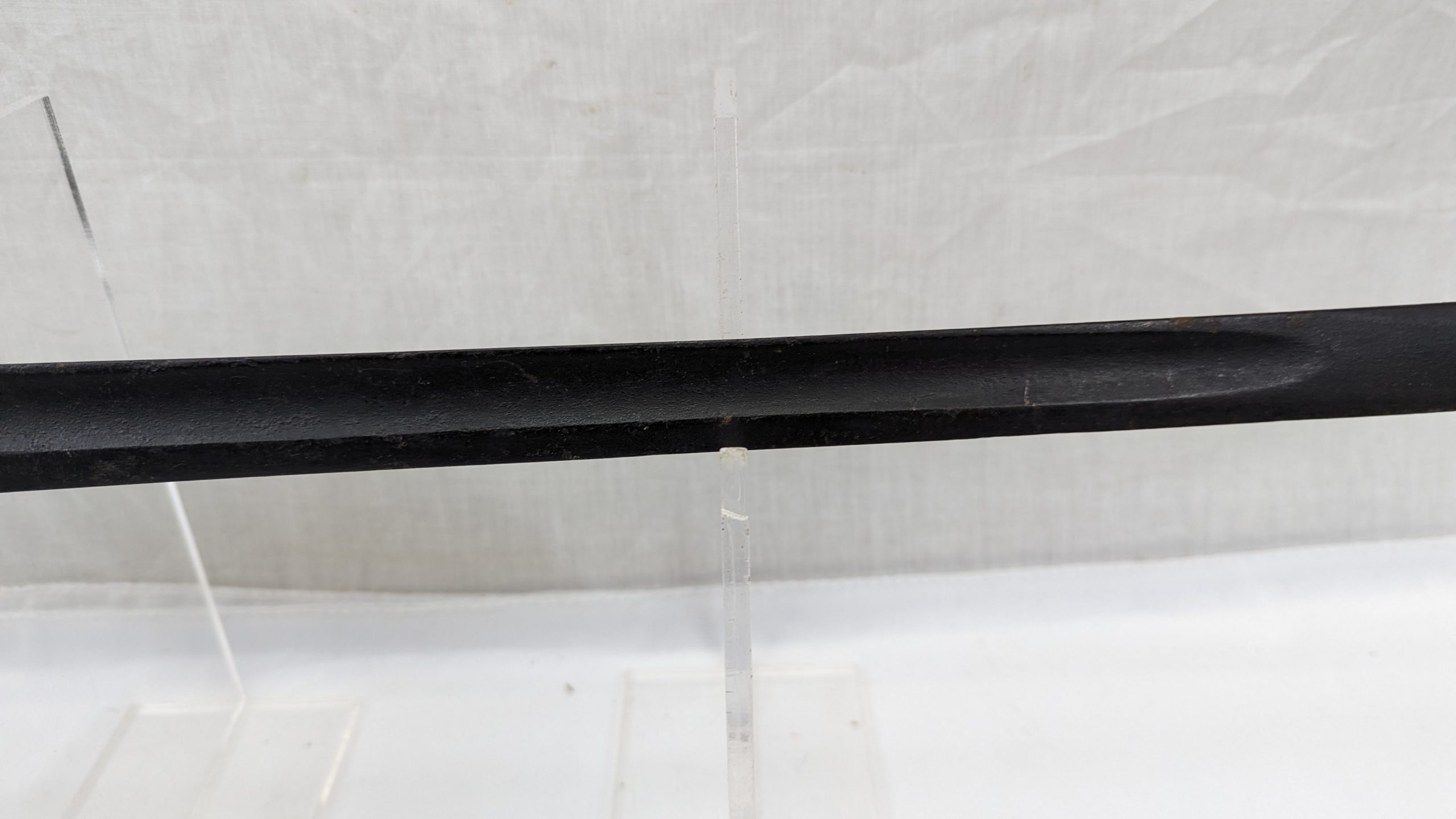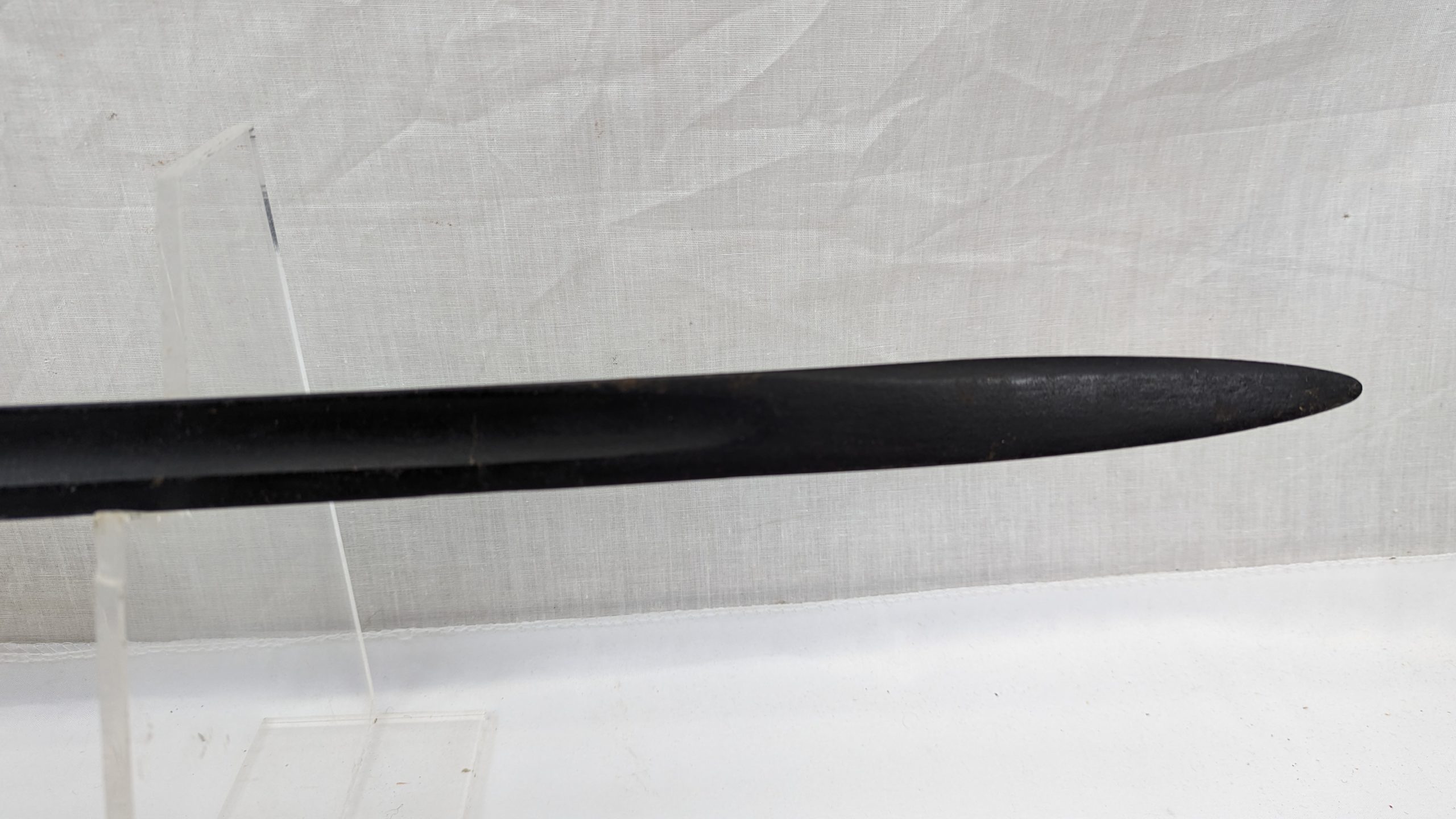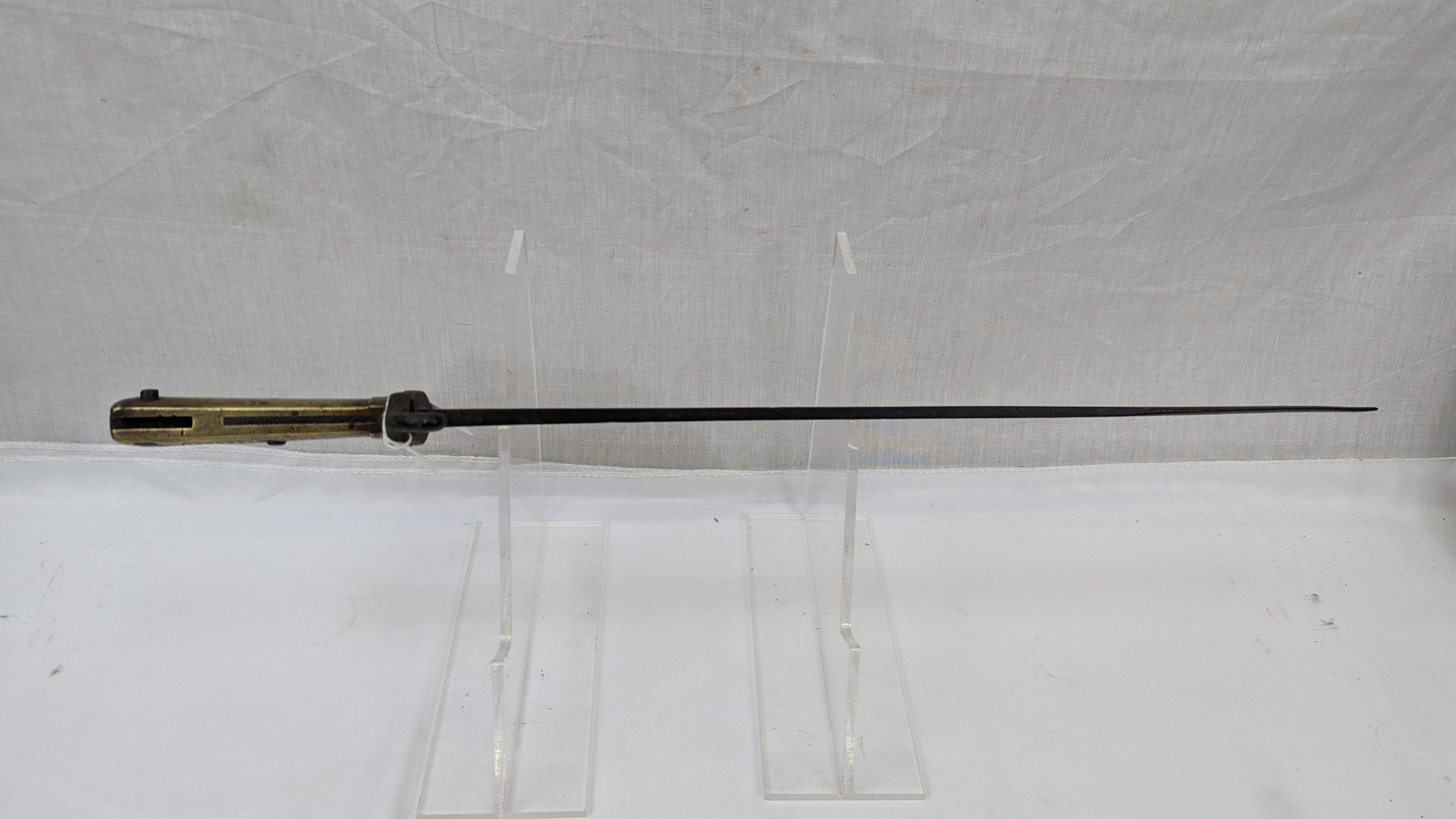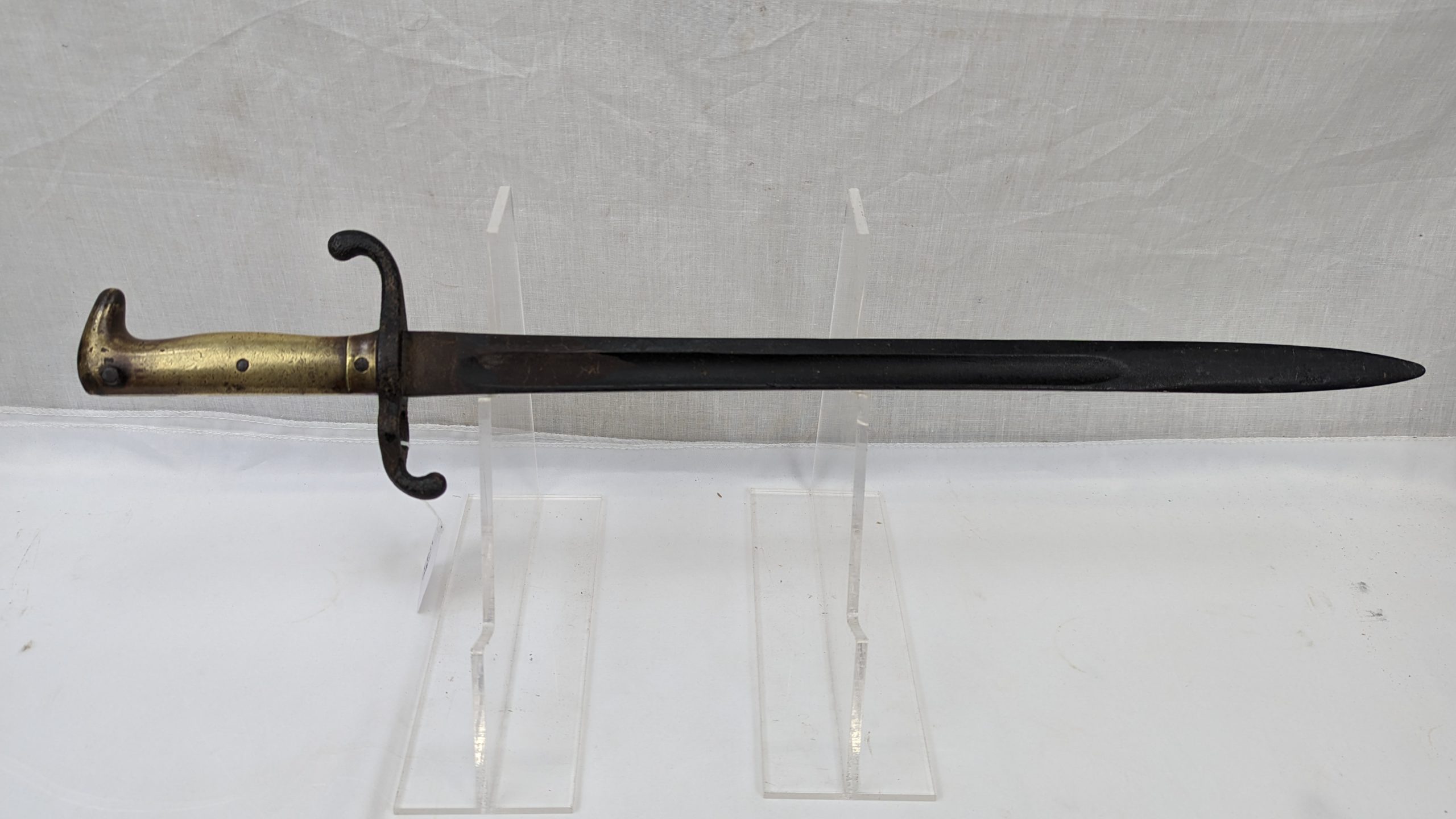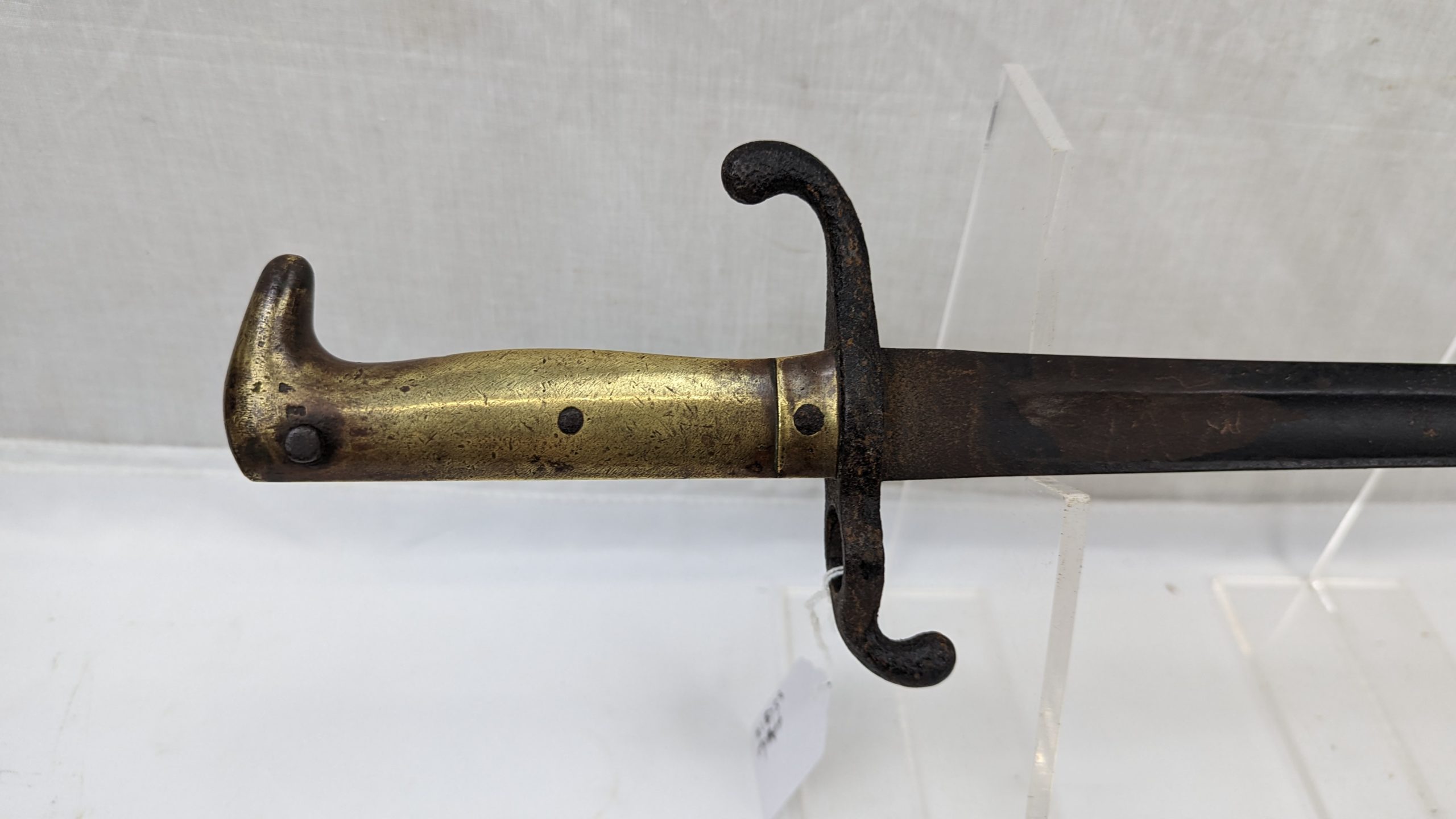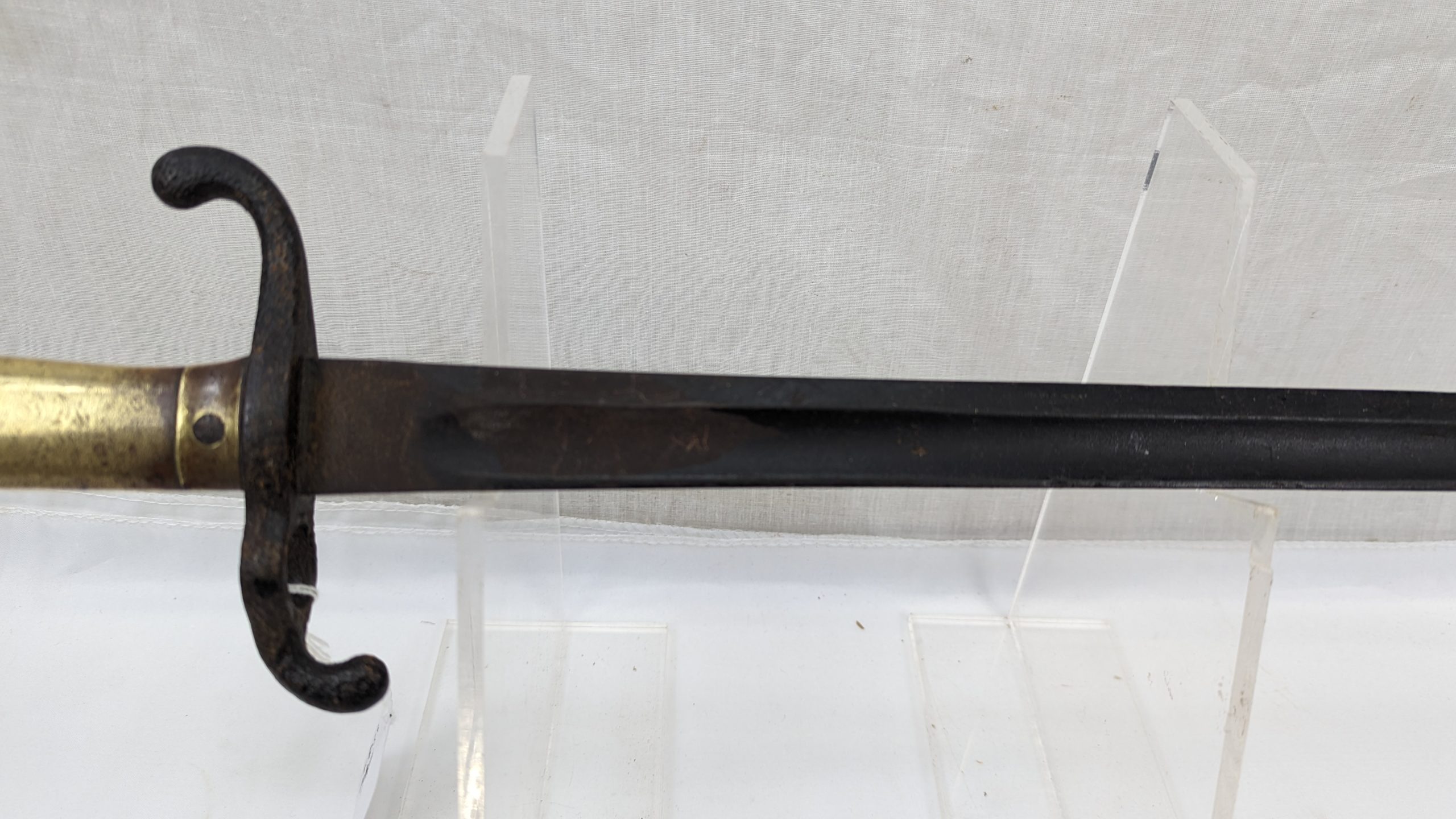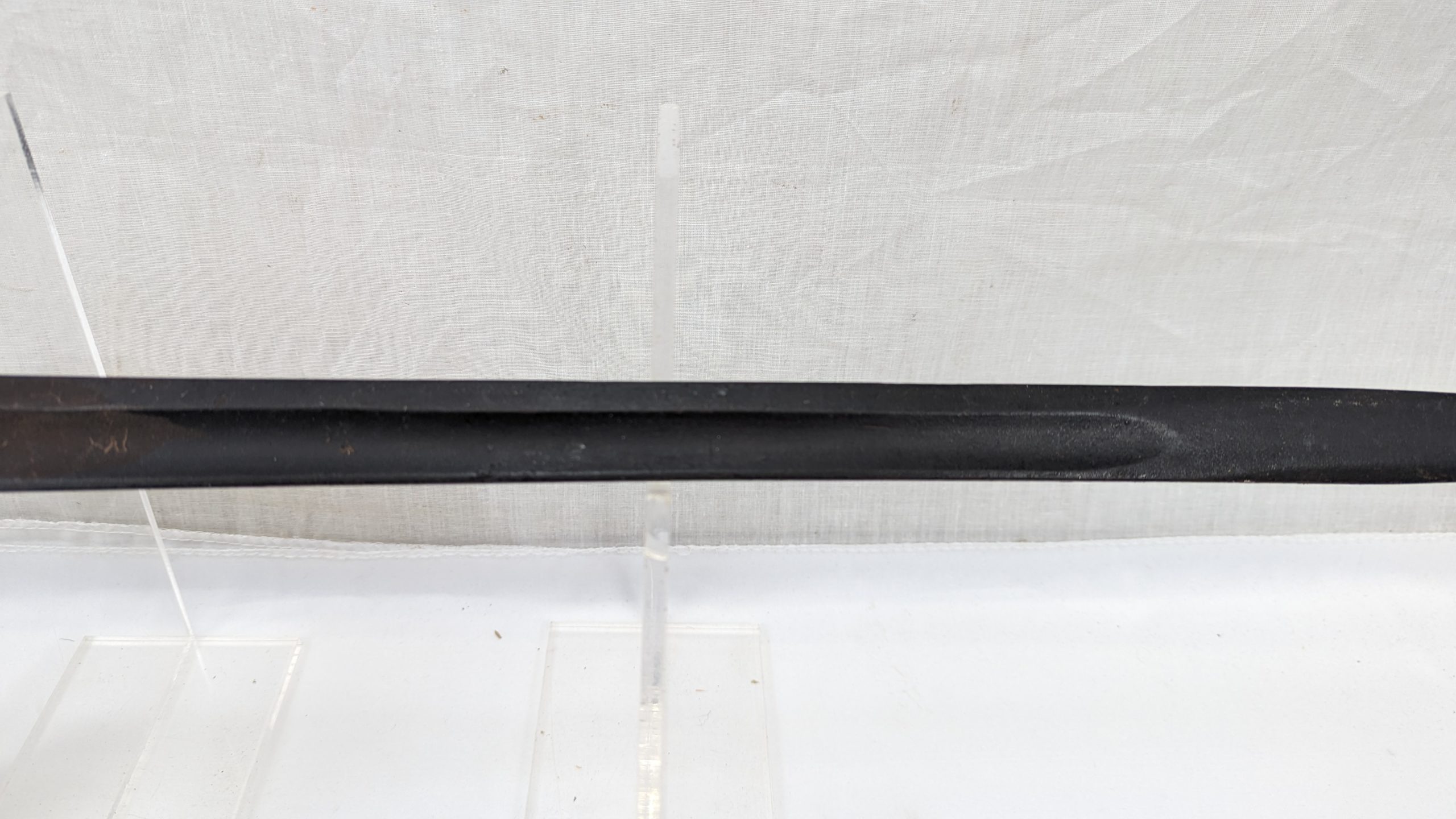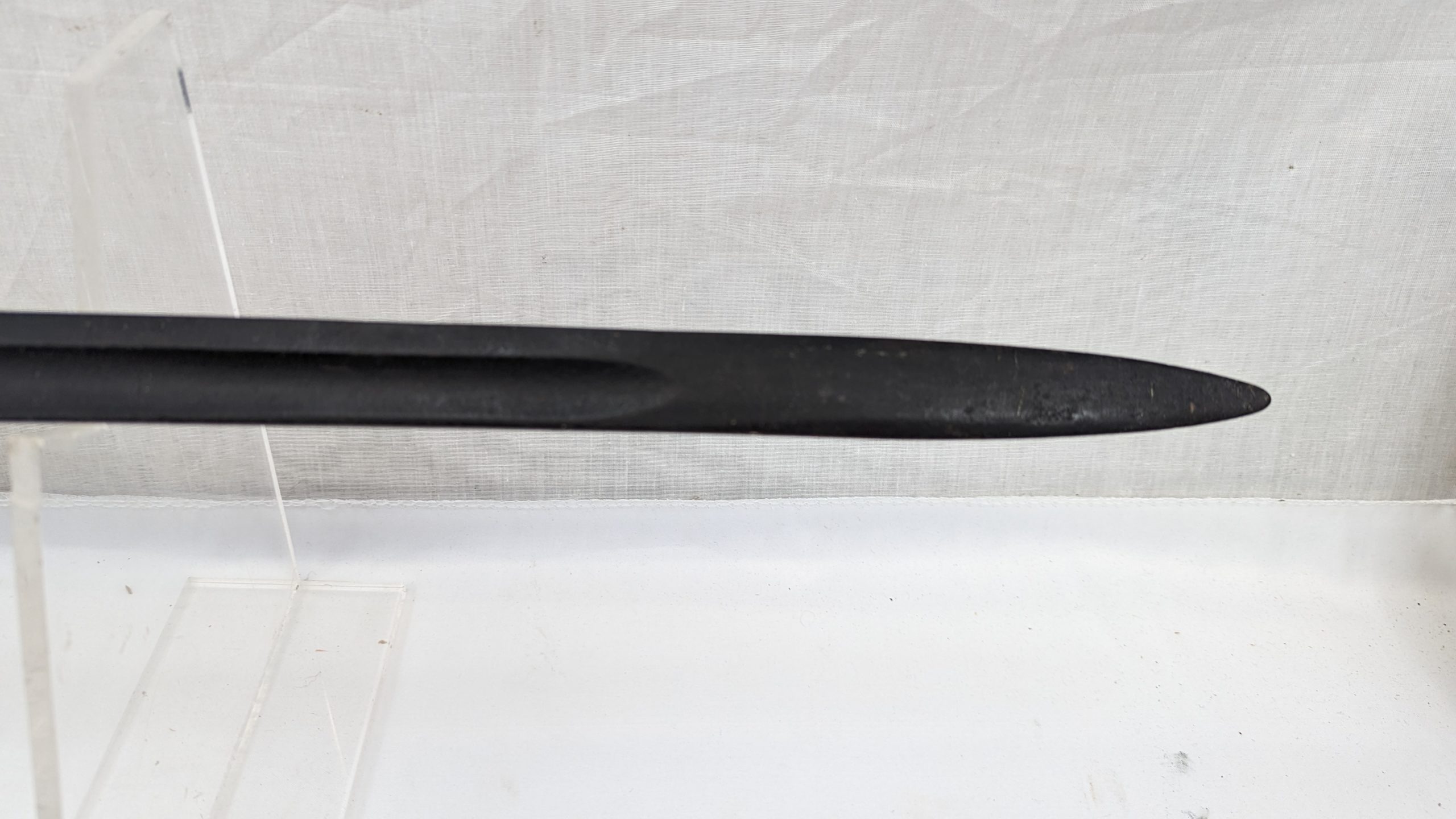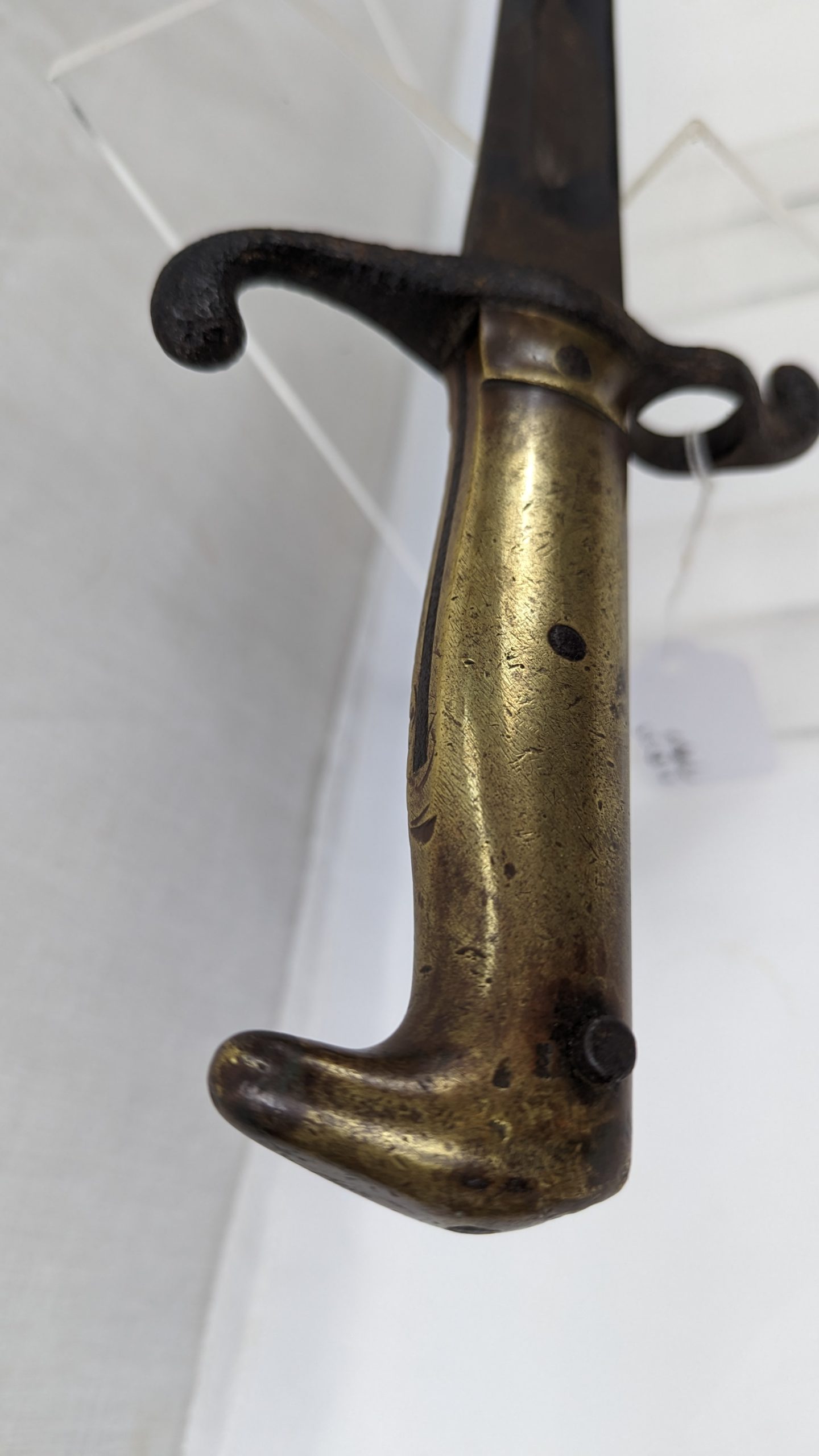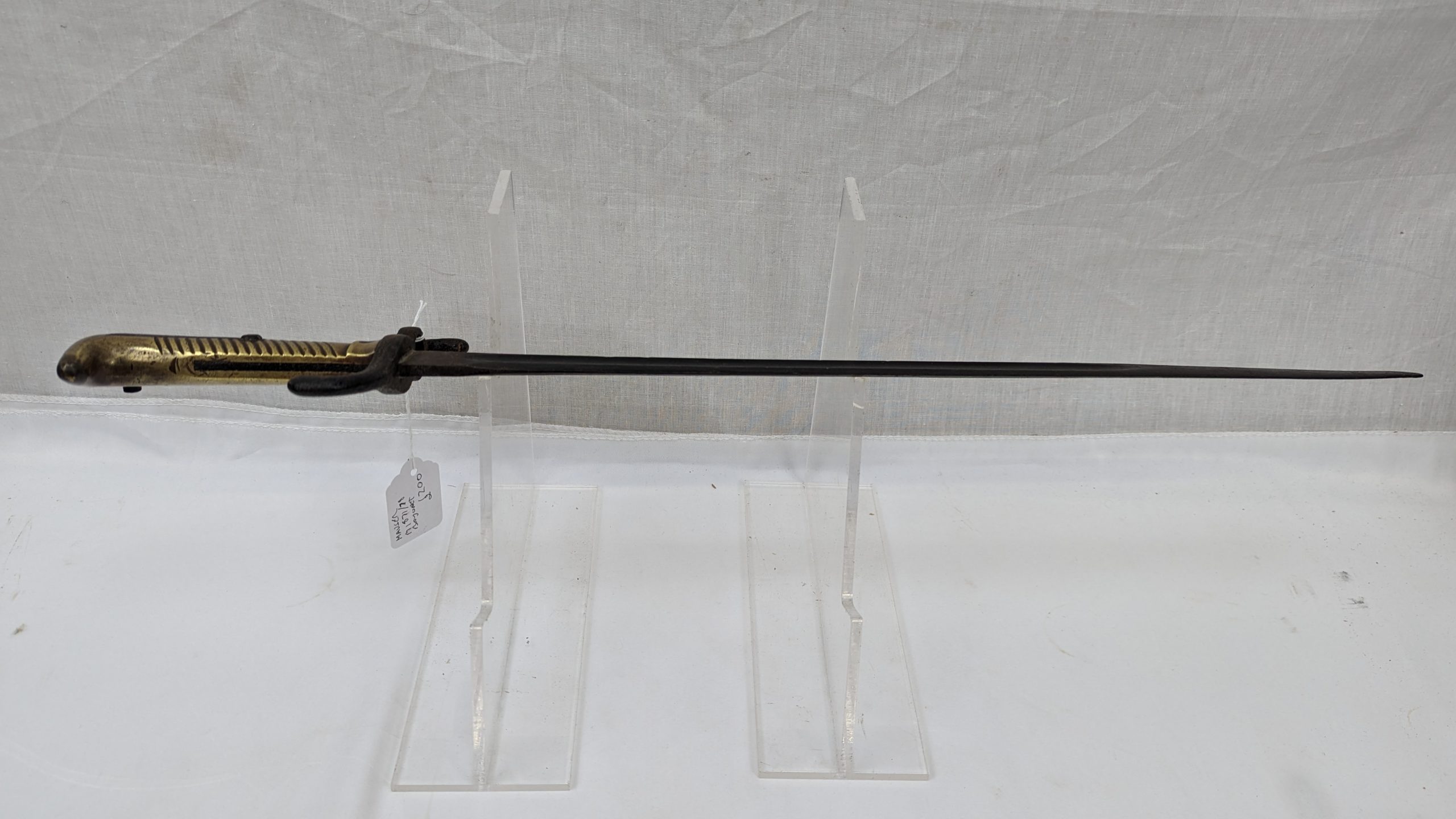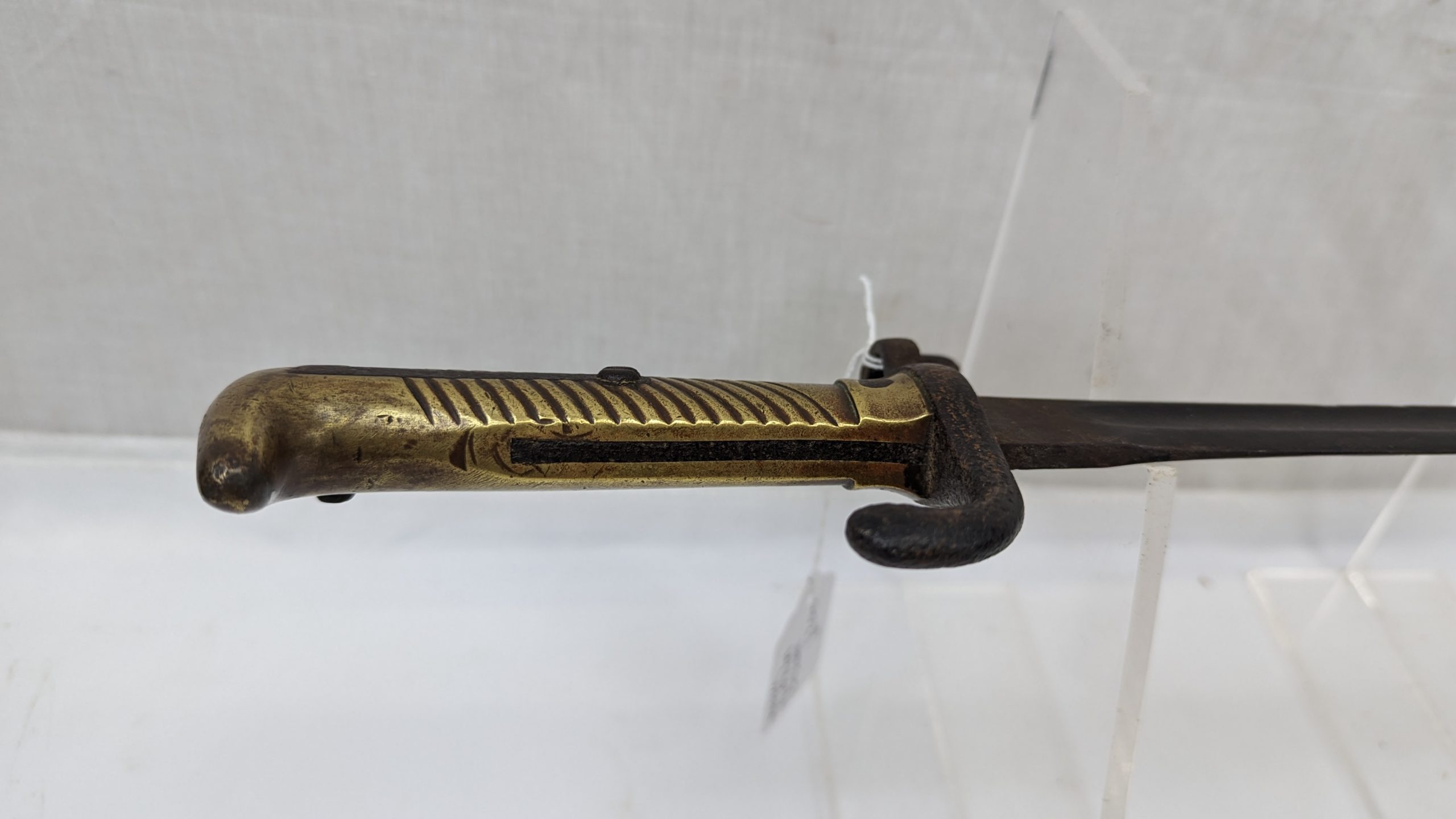~ Mauser M1871 Rifle Bayonet ~
The Mauser M1871 bayonet was designed to be used with the Mauser M1871 rifle, which was a significant step in the evolution of firearms technology.
The bayonet features a straight, single-edged blade with a distinct fuller running along its length to reduce weight while maintaining strength. It has a sharpened cutting edge and a spine that is often left unsharpened. The grip of the bayonet is made of brass and includes a crossguard for hand protection during combat.
The ricasso is stamped Erfurt beneath the crown and dated 1878.
~ Condition ~
Sa can be seen in the pictures the metalwork has signs of age but overall it still remains in good condition. The scabbard is missing.
~ Dimensions ~
The blade is 18 inches (46 cm) long and the overall length of the piece is 23 inches (59 cm).
History: Mauser M1871 rifle and its associated bayonet marked a significant advancement in firearm design. Developed by Paul Mauser and his brother Wilhelm, the M1871 rifle was one of the first successful bolt-action rifles to be adopted by a major military force. Its design incorporated a manually operated bolt mechanism that improved accuracy and rate of fire compared to earlier muzzle-loading rifles.
The Mauser M1871 rifle was adopted as the standard service rifle of the newly unified German Empire, replacing a variety of outdated and disparate rifle models. The introduction of a standardized rifle had important implications for military logistics and tactics.
The Mauser M1871 bayonet played a crucial role in the rifle’s versatility. It transformed the rifle into a formidable melee weapon when engaged in close-quarters combat. Soldiers could fix the bayonet to the rifle quickly, turning it into a spear-like weapon for use in bayonet charges and hand-to-hand combat situations.
The M1871 bayonet saw action during conflicts such as the Franco-Prussian War of 1870-1871, where the German forces armed with Mauser rifles and bayonets were pitted against the French. The success of the Mauser M1871 rifle and its bayonet design contributed to the reputation of the Mauser brand and laid the foundation for future developments in bolt-action rifle technology.
Over time, as firearms technology continued to evolve, the Mauser M1871 rifle and its bayonet were gradually replaced by newer rifle models and bayonet designs. However, their historical significance remains, and they are often collected by enthusiasts and historians interested in the development of military weaponry during the late 19th century.


